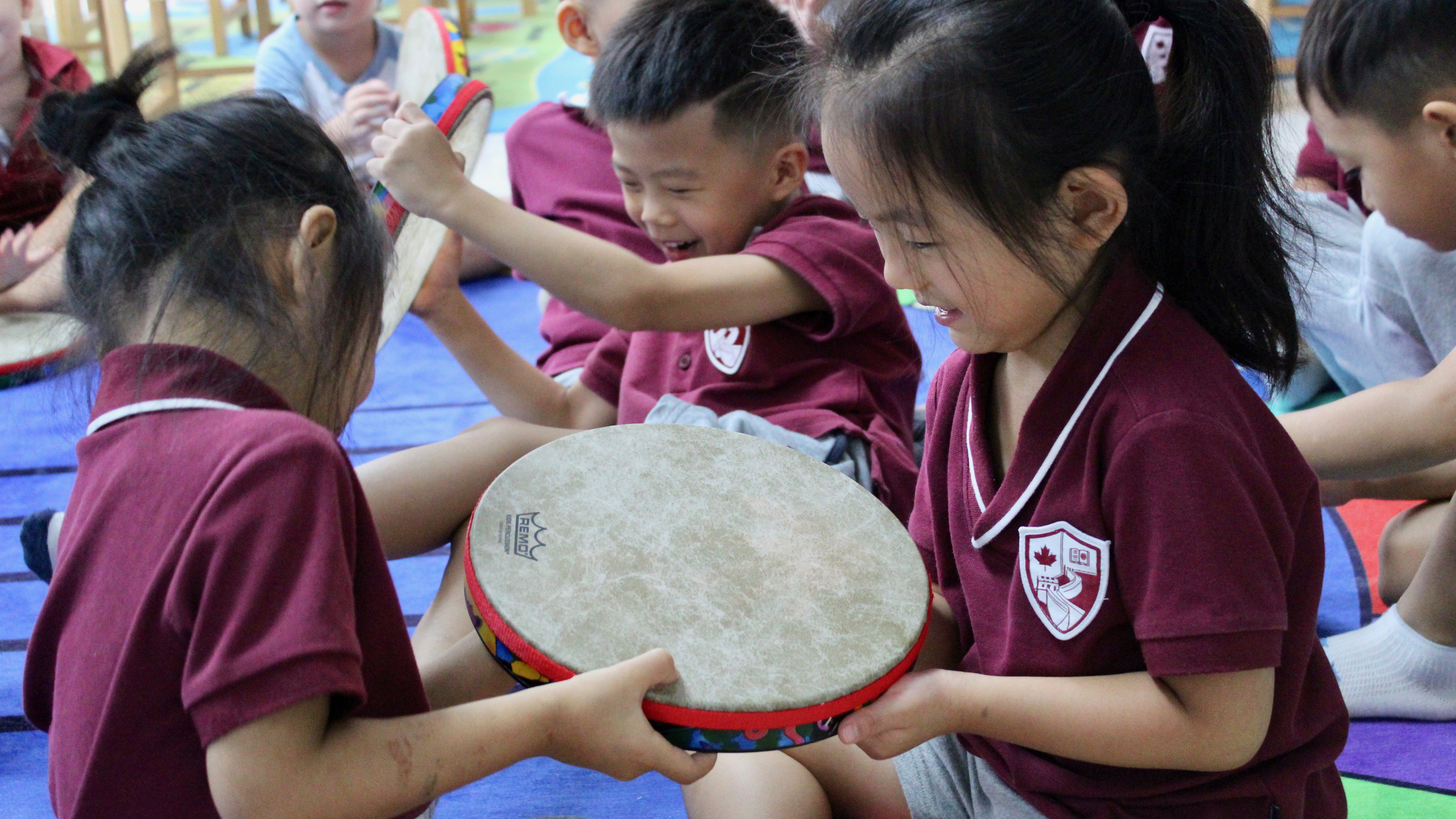
We believe balance is a lifelong skill that will set a strong foundation for our students. - ISNS
The IB Learner Profile of Balance is defined by an understanding of the importance of balancing different aspects of our lives – intellectual, physical, emotional – to achieve well-being for ourselves and others. In the Early Years, we start building this foundation of understanding by organizing our day in a way that incorporates the students’ intellectual, physical, and emotional needs. Throughout the day, we identify these areas with the students and talk about why they are important. Over time, our goal is for the students to begin to identify these areas on their own.
The physical component is primarily focused around outside playtime. We head outside at least twice a day, whether rain or shine. This gives students the freedom to move their bodies in big ways, take some physical risks and learn about their physical boundaries. When we asked one of our K5 students, he pointed out that balance to him was to “do some exercise after working.” Another of our K5 students pointed out that balance was “taking care of ourselves.” The physical also extends into the classroom. One way it is manifested is through our lunch and snack time. Our mealtimes provide great opportunities to discuss the food we put into our bodies and ways to make ourselves strong and healthy. Also, movement is incorporated into transition times and morning meetings through songs, games, and even yoga.
“do some exercise after working.” - Javen
The intellectual component is derived from our engaging curriculum that is created by following the student's interests and questions. We provide students access to materials repeatedly so they can gain a deep understanding of what they are and how they work. As they master these materials, we add provocations to challenge their understandings and scaffold ways to reflect on their thinking. We prompt them to think more deeply through questions and statements such as “Tell me the story about that…” “What happens if you…?” “What could you add?” “How could you solve that problem?” Throughout the year, we build on students’ agency through these prompts so they build their confidence in sharing their learning and attaining the materials they need to investigate their ideas.
The emotional component comes from our nurturing environment and classroom routines and boundaries. At the beginning of the year, we focus a great deal of time on setting up and practicing these routines so that students feel safe and comfortable in exploring within them. The base of our first unit is identifying feelings in ourselves and others. We validate all feelings of the student's experience and practice connecting words to those feelings so students can begin to express their feelings appropriately to other people. Also, we practice solving social challenges through puppet shows, games, and real-life experiences.
“taking care of ourselves” - Liz
At ISNS, all of these components, physical, intellectual and emotional are highlighted and reinforced throughout our day to build up our young learners to be well-rounded, balanced students. We believe the early introduction of such a vital lifelong skill will set a strong foundation for our students.
-contributed by Kaitlin Carrig
Balance in EY